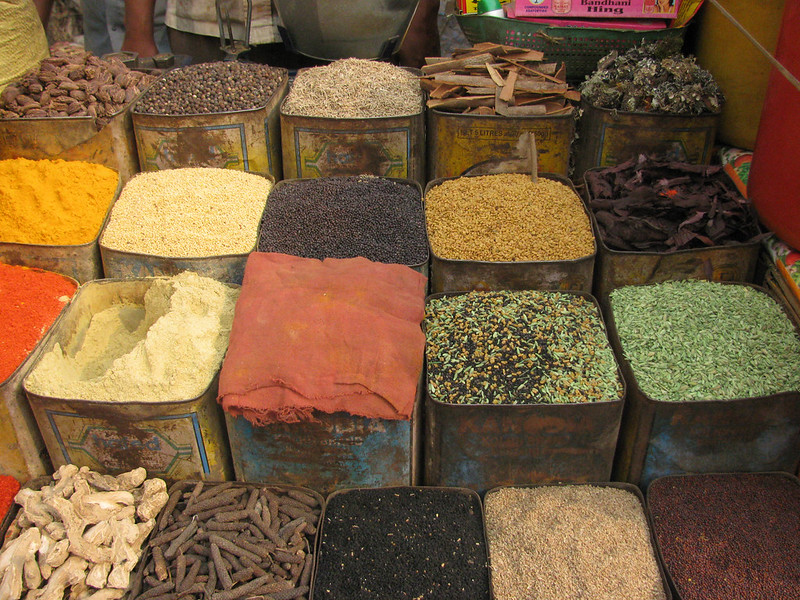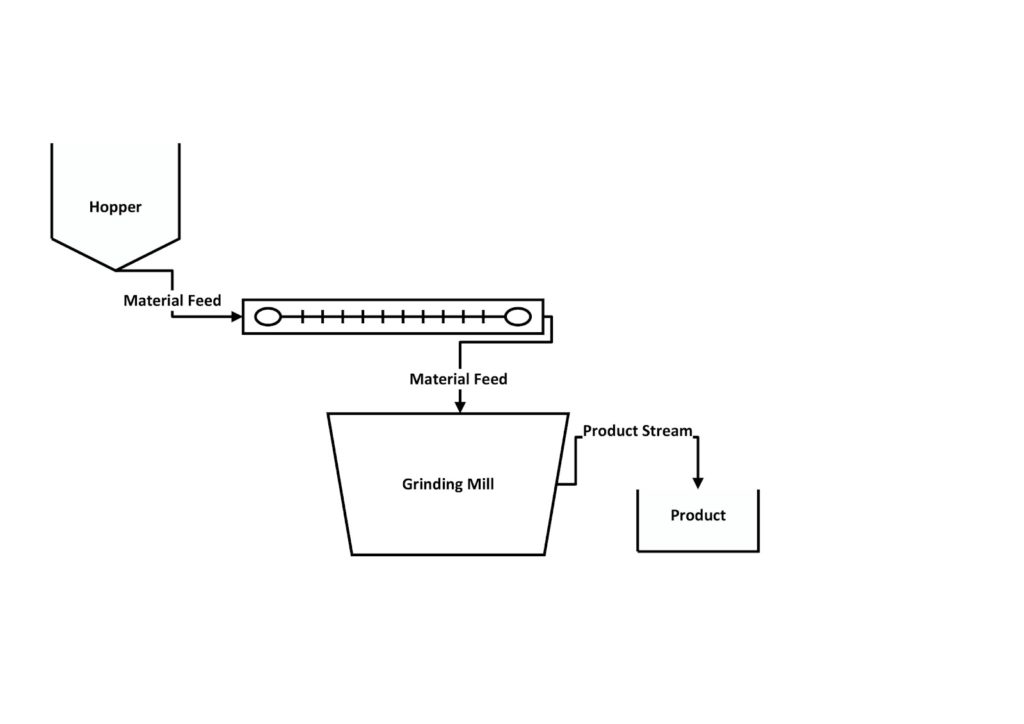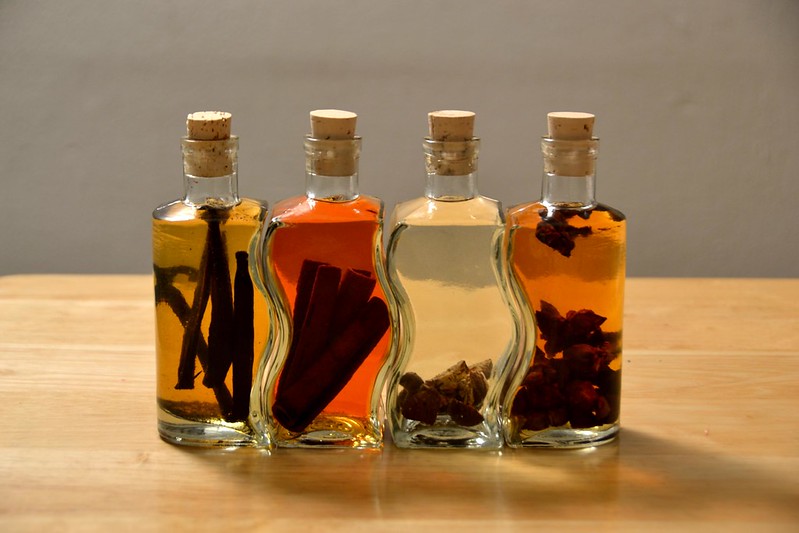Spices, plant products used to enhance the flavor of foods, have been a part of human culture since before history was written. Spice trading and manufacturing have since evolved significantly and are now a multibillion-dollar industry involving several chemical engineering processes. The flavor of a spice lies in the essential oils preserved during the spice manufacturing process. Plant pieces are harvested, then processed and dried. They are then ground into the desired consistency. From there, some spices are packaged while others are used to create extracts or blends.
Ingredient Preparation
Most spice plants are harvested using mechanisms similar to crop farming. Some spice plants must be handled meticulously, as the way the spices are harvested impacts pricing more than any other part of the manufacturing process. Saffron, for example, must be harvested individually by hand. Once plants are harvested, they may go through a preprocessing step in which they are toasted, peeled, washed, sliced, blanched, and unwanted parts are removed. This extra step is entirely based on which spice is being manufactured.
Drying
During the drying process, the goal is to maintain all the volatile oils and flavors while releasing only the moisture content. As the oils are lost, the quality of the spice goes down. Some spices are dried naturally by direct sunlight, but such a slow process allows some microbes to be left behind and possible discoloration of the plant, plus there is little control over the sunlight.
Most spices are dried artificially using convection dryers until there is only 8-10% water content left. A single conveyor dryer is used often in these processes due to the large-scale production required, but various other types of dryers are used depending on the type of plant being dried. The continuous flow of a conveyor dryer, shown below, makes it very useful for large-scale manufacturing. In each of the cells, the plant is exposed to different processing conditions including temperature and airflow direction, resulting in even drying. Temperatures can range dramatically based on what plant product is being used. Bark is dried at the highest temperature and flowers at the lowest.
Grinding
At this point, spices are stored and shipped to the country of use. Spices are then refined through grinding.
Some spice bases, such as bark, must first be cut or crushed into uniform pieces so that they may be ground. Spices are typically ground using a grinding mill, such as the one shown below
The spices will be stored in a hopper and then conveyed into a grinding mill, as shown below in the flow diagram. Since there is still 8%-10% of the moisture content left, though, the spices can “cake” or clump together. Over time this can become significant, as the mill may clog and become less efficient because the output is slowed. In addition, spice oils can be very volatile. A significant amount of oil evaporates because of the mechanical heat created from the grinding process, which leads to lower quality spices overall.
One way around these issues is to use Cryogenic grinding. Grinding at extremely low temperatures freezes any moisture and prevents caking of the spices. In addition, at low temperatures, the volatility decreases enough to keep the integrity of the spice flavor as it is being ground. The grinder also becomes more efficient due to the now-brittle raw material.
Production
At this point, some spices are packaged. Others are used to create extracts, blends, or condiments. Extractions and blends are described below. Spices are considered to be condiments when used in food. Condiments outside of spices can be found in the Condiments module.
Extracts
Extractions concentrate spice flavor and will take the form of either oleoresins or essential oils.
Additional preparation may be needed before extraction begins. Some spices, such as vanilla, are cured before extraction so that maximum flavor can be extracted. Other spices may bypass grinding to ensure flavor integrity. Time of extraction will vary based on what spice and method are being used.
Essential oils can be produced by steam distillation, water distillation, or hydrodiffusion. The most common way to achieve oil separation is by flooding steam into the ground spices in an extractive distillation column as shown in the video below. The feed enters below the spices so the volatile oils are heated and flow with the water condensation into a new storage vessel, in which it can then be extracted from the water using Liquid-liquid extraction or go through more distillation steps to be purified.
Distilling in a water mixture works better for less delicate spices. In this case, the spices are placed in a water solution and heated in a distillation column. Since the water and essential oils have different boiling points, the oil can be easily extracted.
Hydrodiffusion works similar to steam distillation, but the steam feed is placed above the ground spices. The steam used is at a lower temperature and pressure than that of steam distillation, and the product comes out at the bottom of the distillation column as shown in the chart below. The oil output is higher using this method, but the trade-off comes from needing more time to extract the oils.
Some essential oils do not adequately resemble the color and flavor of the spices they are from, so resins are added to form oleoresins. The mixture is achieved by placing the essential oils in a volatile organic solvent. The solvent used is based on the type of spice being extracted and the restrictions placed on the food industry by the government.
Spices either go through a single or double stage extraction. In a single-stage extraction, the spice is placed in the solvent to extract the oleoresin, and then the solvent is evaporated entirely from the extract. The extract must be less volatile than the solvent for this to work. During double-stage extraction, steam distillation is used to extract the essential oil, followed by solvent extraction to extract the resin.
Blends
Blends are combinations of spices developed to provide a unique flavor to food preparations. The type of mixer used will depend on the spice characteristics, as well as the moisture content and desired product characteristics.
Packaging
Once spices have reached the desired quality, they are packaged. Spices are placed in airtight containers to keep the volatile oils in the spices from escaping and prevent moisture from entering the container. An ingredient label may be used depending on the number of spices in the blend. Typically, containers are plastic or glass, range in shape and size, and are sealed with a thin plastic or paper film and then topped with a lid. Some whole spices are sealed in bags. Once they are packaged, spices are distributed to vendors.
Quality Control
The Food and Drug Administration of the United States (FDA) and the Flavor and Extracts Manufacturers’ Association (FEMA) set the standards for spice and extract safety and quality. Making sure there are no unwanted plant fibers or contaminants is important to ensure the spices are both safe and have optimal flavor.
There are many ways to test the purity of spices, allowing any potential allergens or toxic compounds to be found before shipment and packaging. From a qualitative perspective, humans can use sight, smell, and taste to identify and determine spice purity. The accuracy of such testing can range, however, so this testing method is used as a first indicator only rather than as an official test. Microscopic examination can help identify the contents of the spice. For example, the presence of a lot of starches or fiber in the product spice are indicators of low quality. This method is cheap but is still somewhat qualitative. To get a comprehensive analysis, expensive identification equipment, such as gas chromatography for essential oils, is used. Such equipment can quantify the different compounds in the spice by using separation or spectroscopy.
The drying process is heavily monitored, and the spices are held to this standard throughout the rest of the processing. Since there must be a low water content of 8-10%, most spices have a long shelf life, and bacteria activity is negligible. This makes it easier to manufacture safe spices. Spices may be dried near where they are harvested, but most spices are ground and processed in the country where they will be used. Doing so helps to ensure the product will not have any unwanted additives, as it is much easier to hide additives in a ground form.
Acknowledgments
- Buhler Aeroglide, Cary, NC
- Mendel Company, East Hanover, NJ
- Homemade Extracts (Day 2) [Photograph]. (2011).
- United States Department of Agriculture
References
- Custom Blending (2012). In Elite Spices. Retrieved from http://www.elitespice.com/manufacturing/custom-blending/
- Gale (2018). Spice and Extract Manufacturing. Encyclopedia of American Industries. Farmington Hills, MI: Gale, 2018. Business Insights: Global. Web. 20 Aug. 2019.
- Hydro diffusion in essential oil manufacture (2019, August 17). In Esoteric Oils. Retrieved from https://essentialoils.co.za/hydro-diffusion.htm
- Prosea, Introduction to Spices. (2016, May 4). Plant Use English. Retrieved 13:20, August 20, 2019 from https://uses.plantnet-project.org/e/index.php?title=PROSEA,_Introduction_to_Spices&oldid=222024.
- Shelef, L. A. (1984), Antimicrobial Effects of Spices 1. Journal of Food Safety, 6: 29-44. doi: 10.1111/j.1745-4565.1984.tb00477.x
Developers
- Austin Potter
- Tamia Middleton






